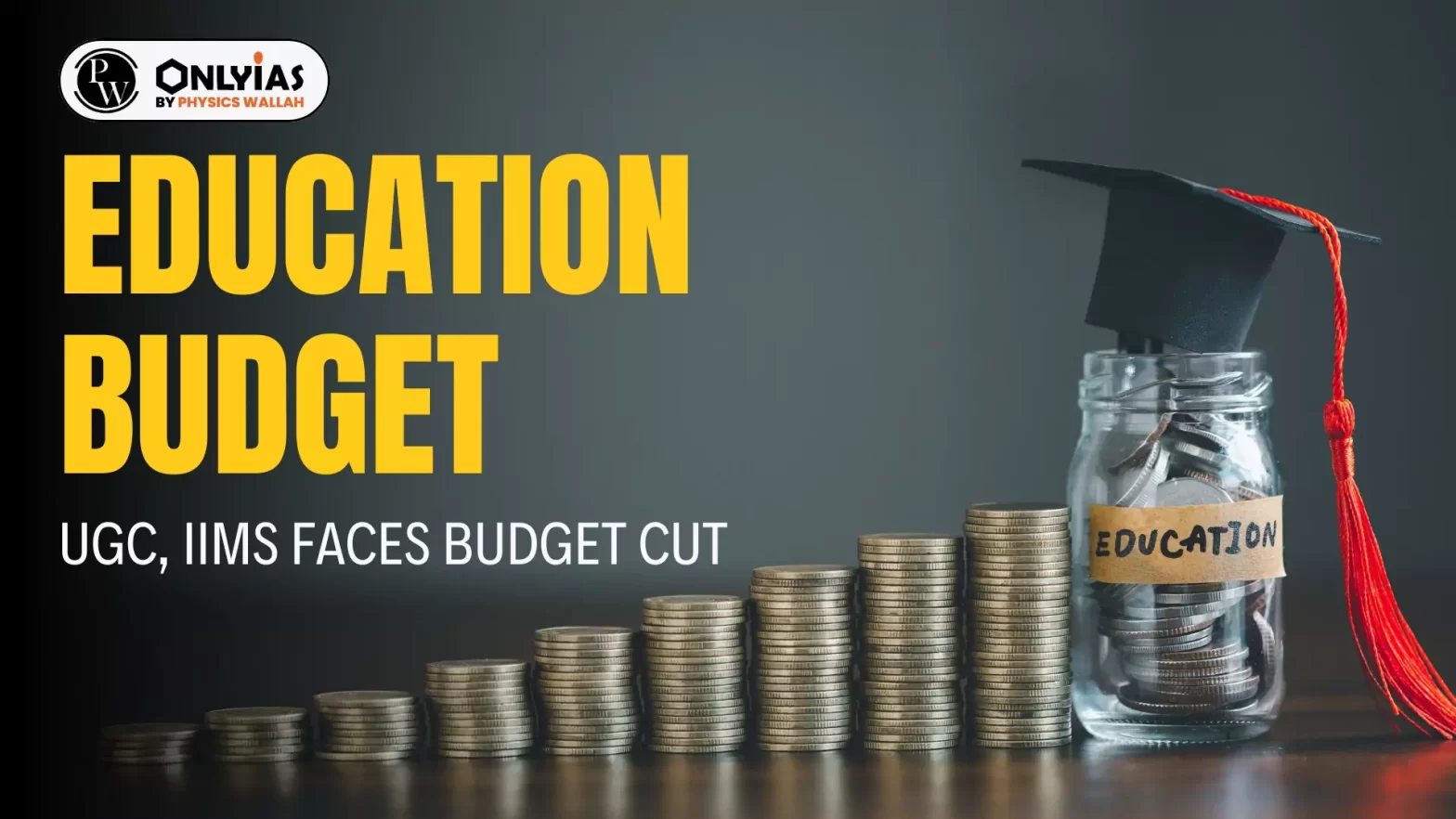Context:
This editorial is based on the news “A disservice to the education sector” which was published in the Hindu. Budgetary allocations hinders the nation’s Gross Enrollment Ratio (GER) and access to education.
Recent Education Budget Trends:

- Current education budget of India: approximately 2.8% of the GDP.
- 60% cut in UGC allocation in the Interim Budget.
- Reduction of ₹9,600 crore for higher education from the preceding fiscal year’s revised estimate.
- Slashes in allocations of Indian Institutes of Technology and the Indian Institutes of Management.
- Budget allocations not in alignment with the Incheon Declaration with Education 2030: championed by India, seeking inclusive, equitable, and quality learning for all through a targeted allocation of 4-6% of the nation’s GDP.
- School Education:
- Marginal increase of 0.73% towards school education.
- This will increase the economic burden on both educational institutions and students.
- As the allocated funding is directed towards the Higher Education Financing Agency (HEFA) and not University Grants Commission (UGC) compel colleges and universities to introduce more self-financing courses.
Higher Education Financing Agency (HEFA):
- It is a joint venture company of Canara Bank and Ministry of Education GoI.
- It provides financial assistance for creation of educational infrastructure and R&D in India’s premier educational Institutions.
- Through Loans.
Gross Enrolment Ratio or GER:
- It is the ratio of people enrolled in higher education to the population in the age group of 18-23.
- India’s GER at the higher education level trials significantly behind the global average of 38%, marking it the lowest among BRICS nations.
|
-
Implications of Funding to HEFA and not UGC:
- Burden on students will increase: Fees will increase. This will affect the marginalised students even more.
- Institutions will rely on the ‘benevolent’ HEFA. Their loan and interest repayment burden with increase. There is a chance that focus will shift from providing quality education to mere sustenance.
- Affect Gross Enrolment Ratio (GER) : especially of the marginalised groups, as their Gross Enrolment Ratio (GER) falls significantly below the national average of 27.3%.
- PM SHRI Schools: A significant share of the budget is allocated to these.
- These schools adhere to the directives of the National Education Policy (NEP) 2020.
- The higher budgetary allocation to them seems to be a way of arm-twisting schools from other States/Union Territories who embrace it in its entirety.
- New Eklavya Model Residential Schouls (EMRS): very less budget as compared to PM SHRI Schools.
- These schools are established under the Ministry of Tribal Affairs.
- To provide quality middle and high level education to Scheduled Tribe (ST) students in remote areas,
- Majority of the total school education budget is dedicated exclusively to a mere 0.7% of schools, leading to a substantial decrease in the overall budget for existing schools and leaving them in the lurch.
Pradhan Mantri Schools for Rising India (PM-SHRI) Yojana:
- It is a centrally sponsored scheme for upgradation and development of more than 14500 Schools across the country.
- It aims at strengthening the selected existing schools from amongst schools managed by Central Government/ State/ UT Government/ local bodies.
- In alignment with the National Education Policy 2020 and act as exemplar schools and also offer mentorship to other schools in their vicinity.
- Aim: qualitative teaching, learning and cognitive development, as well as creating holistic and well-rounded individuals equipped with key 21st century skills.
|
Conclusion
Robust funding is very crucial to bridge gaps, enhance enrolments, ensure retention, and elevate the overall reach,quality and inclusiveness of education.
![]() 26 Feb 2024
26 Feb 2024


